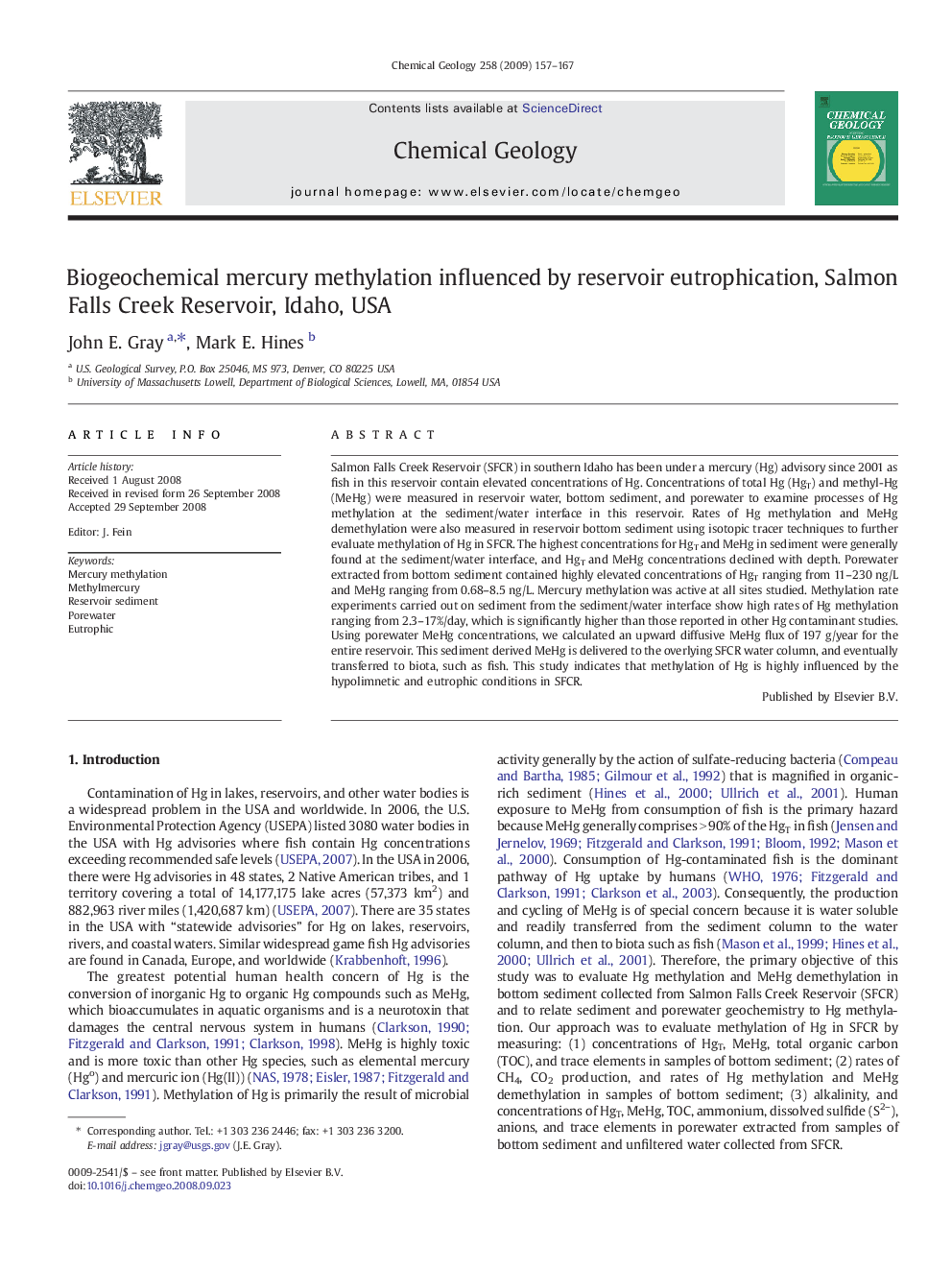| Article ID | Journal | Published Year | Pages | File Type |
|---|---|---|---|---|
| 4700419 | Chemical Geology | 2009 | 11 Pages |
Salmon Falls Creek Reservoir (SFCR) in southern Idaho has been under a mercury (Hg) advisory since 2001 as fish in this reservoir contain elevated concentrations of Hg. Concentrations of total Hg (HgT) and methyl-Hg (MeHg) were measured in reservoir water, bottom sediment, and porewater to examine processes of Hg methylation at the sediment/water interface in this reservoir. Rates of Hg methylation and MeHg demethylation were also measured in reservoir bottom sediment using isotopic tracer techniques to further evaluate methylation of Hg in SFCR. The highest concentrations for HgT and MeHg in sediment were generally found at the sediment/water interface, and HgT and MeHg concentrations declined with depth. Porewater extracted from bottom sediment contained highly elevated concentrations of HgT ranging from 11–230 ng/L and MeHg ranging from 0.68–8.5 ng/L. Mercury methylation was active at all sites studied. Methylation rate experiments carried out on sediment from the sediment/water interface show high rates of Hg methylation ranging from 2.3–17%/day, which is significantly higher than those reported in other Hg contaminant studies. Using porewater MeHg concentrations, we calculated an upward diffusive MeHg flux of 197 g/year for the entire reservoir. This sediment derived MeHg is delivered to the overlying SFCR water column, and eventually transferred to biota, such as fish. This study indicates that methylation of Hg is highly influenced by the hypolimnetic and eutrophic conditions in SFCR.
